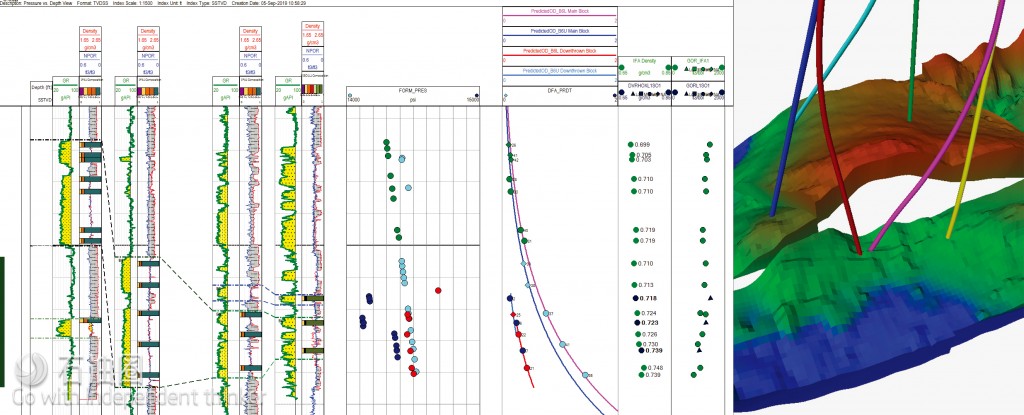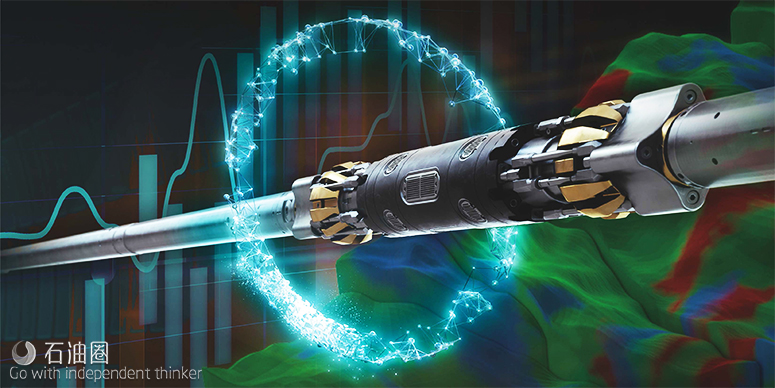Revolutionizing dynamic reservoir characterization by combining new digital hardware with cloud-native collaborative software for unprecedented performance and insights in all conditions
Schlumberger introduced the Ora intelligent wireline formation testing platform at the SIS Global Forum 2019 in Monaco on Sept. 18. The platform leverages a new architecture and metrology for enhanced performance, enabling dynamic reservoir characterization in all conditions, including where previously impossible.
Rated to 392 degF [200 degC] and 35,000 psi [241 MPa] with dual-flowline architecture, laboratory-accuracy metrology, and smart downhole automation, the Ora* platform’s hardware represents a new benchmark in wireline formation testing capability. Flow management options from 0.05 to 108 bbl/d in combination with focused radial probes and a dualinlet dual-packer system perform focused sampling in virtually all conditions and bring deep transient testing operations to wireline. The efficient, reliable, and flexible performance of the Ora platform not only improves on existing standards, but also makes formation testing a reality where not previously possible, including HPHT conditions, tight or unconsolidated formations, and challenging fluids.
How digital capabilities improve reservoir evaluation
1.Intelligent planning brings together all relevant information for designing the optimal hardware configuration and data-acquisition strategy.
2.Operations control gives your team members, wherever they are located, collaborative access to operations and results.
3.Contextual insights provides detailed 2D and 3D visualizations of the data acquired in reservoir context on a customized interactive dashboard for making realtime informed decisions.
Smart hardware
At the heart of the Ora platform is hardware built on 90 years of pacesetting technical expertise and innovation. The valves, gauges, and hundreds of other key system components of the Ora platform have smart controls that are AI ready and can intercommunicate, enabling downhole automation of complex workflows. This ensures that data can be reliably integrated into the reservoir context in real time for quick, informed decision making.
Rapid acquisition of representative formation fluids
1.The focused radial probe with its large fluid inlet area self-seals to the wellbore to acquire fluid circumferentially from the reservoir, instead of funneling fluid to a single constricted acquisition point. The automated probe-setting process uses a feedback loop between the probe and flow manager to accelerate the inflation process.
2.High-precision flow rate control and the focused radial probe design actively divert mud-filtrate invasion into the guard inlet while pure reservoir fluid flows into the sampling inlet and flowline.
3.The parallel flow of fluids in the sample and guard flowlines of the dual-flowline architecture results in a shorter string and simultaneous fluid analysis on both flowlines with the same hardware.
The flow manager precisely governs the broad dynamic range of the wideband downhole pump for highly sensitive and effective control of the flow rate, with options from 0.1 to 200 cm3/s [0.05 to 108 bbl/d] and up to 8,000-psi [55-MPa] differential pressure.
Having a dedicated pump for both the sample and guard flowlines means that the flow manager software can precisely and independently control both the rate and pressure of each line for fast fluid cleanup in all conditions. Regardless of formation complexity, the fine pump control unlocks fluid access: In loose formations, sanding exposure is reduced whereas in in tight, low-mobility rock, excessive pressure drawdown is avoided to keep fluids in single phase.
Reduced operational risk
The systems integration, dual-flowline architecture, and material selection of the Ora platform result in a toolstring that is significantly shorter and lighter than conventional WFT tools. The intelligent conveyance system further reduces the required cable tension—and the likelihood of sticking. For deep transient testing, where high pump volumes are expected, active hydrocarbon circulation ensures well control without the need for flaring or fluid disposal at surface.
Laboratory-accuracy metrology
The advanced downhole fluid analysis (DFA) system fills two roles for the Ora platform. The first is sample assurance, in which the purity of the acquired reservoir fluid is quantified in situ by multiple sensors, including data from the dual-flowline 24-channel spectrometer; fluorescence, resistivity, and density sensors; and pressure and temperature gauges.
Second, once the presence of representative fluid has been verified, further analysis can be conducted by extensively profiling fluid properties with a suite of high-precision, high-accuracy measurements including oil, water, and gas volume fractions; gas/oil ratio (GOR); hydrocarbon composition; CO2; calibrated resistivity; density; viscosity; and fluid color. All gauges and DFA components are fully rated to 200 degC.
Automated capture of representative fluids
PVT sample capture is conducted with a six-bottle sample chamber system, which can be deployed in multiples in a single descent. Starting at the probe, scavenging of various trace elements, such as H2S, is minimized because of low exposure to oil-based mud filtrate as a result of the focused-acquisition process. All material in the flow path is low scavenging, seals are minimally exposed, and dead volumes are eliminated to maintain the sample.
The flow path between the main flowlines and the sample bottles is flushed downhole with formation fluid as part of the sample acquisition process prior being filled. This technique saturates the bottle heads and seals and preserves the trace elements in the sample after filling. Samples can be acquired directly behind the inlet as well as farther up in the toolstring, downstream of the pump.
Talos Energy Determines Cross-Fault Connectivity Using Real-Time Insights from New WFT Platform
Talos Energy wanted to resolve uncertainty about the connectivity of reserves across the main productive reservoir and adjacent downthrown block. Only low-resolution seismic data was available for the downthrown block.
Using the available models, data, and Ora platform’s intelligent planning, Talos and Schlumberger collaboratively designed the optimal hardware configuration and acquisition strategy to efficiently convey the tools into the reservoir, determine the relevant fluid property gradients, and benchmark the results in real time.
The deployment leveraged the automated integrated components of the dual-flowline probe with its large flow area to expedite fluid extraction. Two dedicated flowline pumps finely controlled the drawdown to reduce sanding, while integrated low-contact-area standoffs and rollers mitigated the sticking risk.
The Ora platform’s contextual insights dashboard visualized interpreted data to determine from the pressure depletion that the fault was not sealing. The fluid property gradients indicate a common hydrocarbon column between two wells in the downthrown block 800 m apart, for sufficient reserves to warrant developing this block. The real-time insight—that the appraisal well had penetrated a single reservoir, instead of potentially two reservoirs—meant that applying for a commingle permit was avoided and the completion design requirements were simplified.
All stations showed only negligible contamination levels with an average cleanup time of less than 2 hours per station. Subsequent laboratory analysis confirmed <1% contamination in the collected samples.


 石油圈
石油圈
